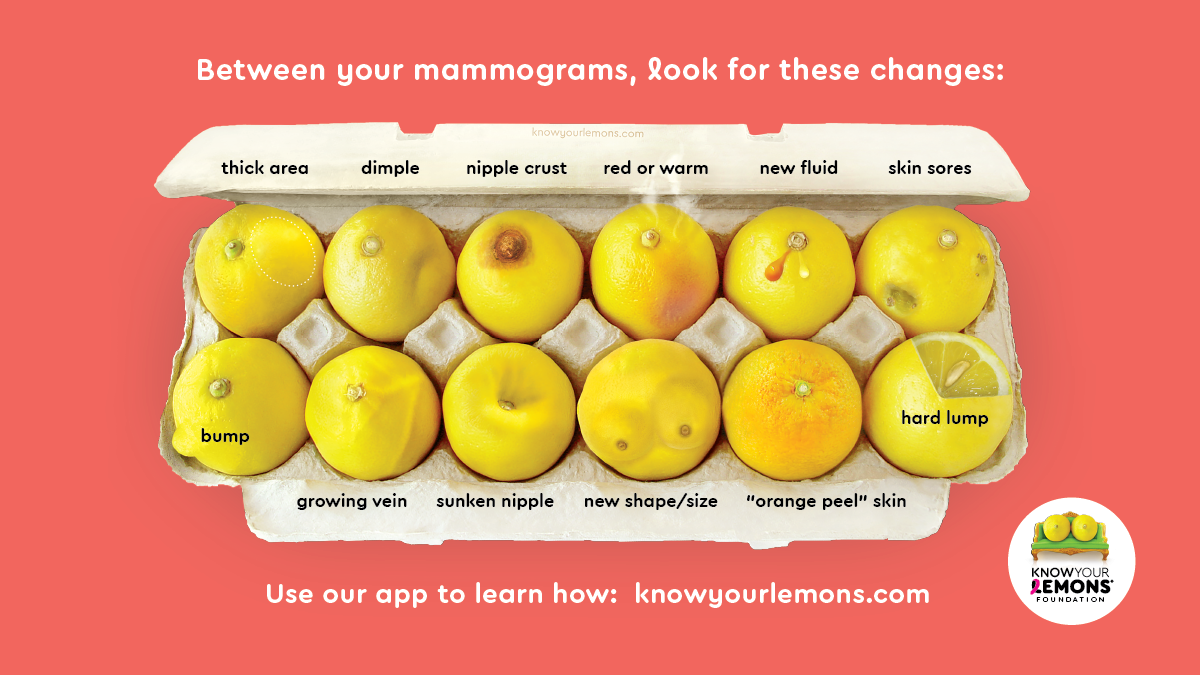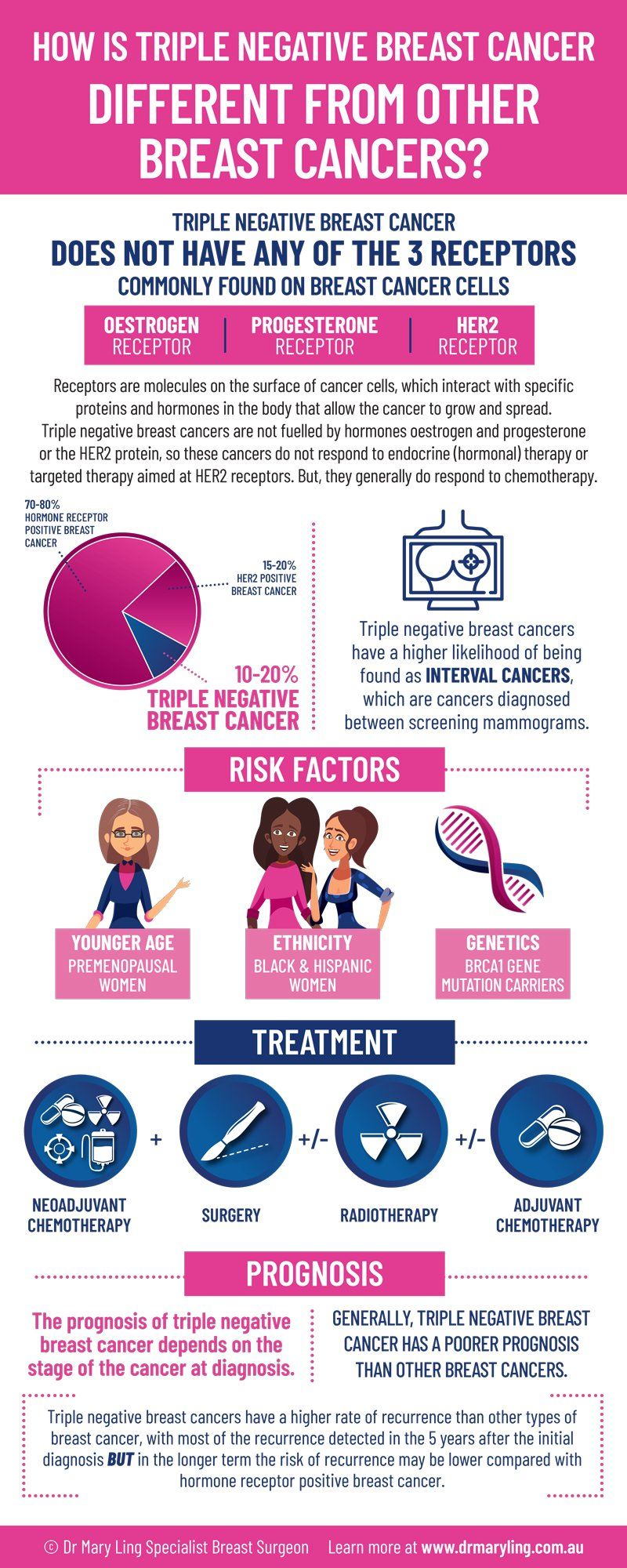TRIPLE NEGATIVE BREAST CANCER
What is triple negative breast cancer?
Triple negative breast cancer is a type of breast cancer that does not have any of the 3 receptors commonly found on breast cancer cells - the oestrogen, progesterone and HER2 receptors. Receptors are molecules on the surface of cancer cells, which interact with specific proteins and hormones that allow the cancer to grow and spread.
Triple negative breast cancers are not fuelled by hormones oestrogen and progesterone or the HER2 protein, therefore they do not respond to endocrine (hormonal) therapy (e.g. Tamoxifen) or targeted therapy aimed at HER2 receptors (e.g Herceptin), but do generally respond to chemotherapy.
How common is triple negative breast cancer?
Triple negative breast cancers account for 10-20% of all breast cancers.
What are the risk factors for triple negative breast cancer?
Anyone can be diagnosed with triple negative breast cancer. Known risk factors include:
Younger Age
Premenopausal women are more likely to be diagnosed than postmenopausal women.
Ethnicity
Black and Hispanic women are more likely to be diagnosed compared with Asian and non-Hispanic white women.
Gene Mutation
Women with BRCA1 gene mutations are more likely to develop triple negative breast cancer. Approximately 75% of breast cancers diagnosed in people with a BRCA1 mutation are triple negative, compared to 15-20% of breast cancers diagnosed in people with a BRCA2 mutation.
How is triple negative breast cancer different?
Triple negative breast cancers are considered more aggressive
and have a poorer prognosis
than other types of breast cancer. These cancers are more likely to spread
beyond the breast and more likely to recur
after treatment. Metastasis is more likely to internal organs, brain and spinal cord and lungs (and less likely to bones).
Triple negative breast cancers also tend to be higher grade than other types of breast cancers. The higher the grade, the less the cancer cells resemble normal healthy breast cells in the appearance and growth patterns. On a scale of 1 to 3, triple negative breast cancers are often grade 3.
Triple negative breast cancers have a higher likelihood of being found as interval cancers, which are cancers diagnosed between screening mammograms.
What is the treatment for triple negative breast cancer?
The mainstay of treatment for early stage triple negative breast cancer is neoadjuvant chemotherapy followed by surgery. Radiotherapy may also be required.
Research has shown that when triple negative breast cancer is treated with chemotherapy before surgery (neoadjuvant chemotherapy) and there are no active cancer cells left in the tissue removed during surgery (known as pathologic complete response or pCR), disease-free survival and overall survival are better.
Women diagnosed with triple negative breast cancer, especially under the age of 50 years, should be referred to a family cancer clinic for genetic counselling and testing.
What is the prognosis for triple negative breast cancer?
The prognosis of triple negative breast cancer depends on the stage of the cancer at diagnosis.
Generally, triple negative breast cancers have a poorer prognosis than other types of breast cancers, but new treatments are showing encouraging results.
Triple negative breast cancers have a higher rate of recurrence than other breast cancers, with most of the recurrence detected in the 5 years after the initial diagnosis. But, in the longer term (over 10 years), the risk of recurrence may be lower compared with hormone receptor positive breast cancer.
For Patients
First Visit Guide Fees & Payments Private Patients NewsletterFor Referrers
Make a Referral Newsletter Useful ResourcesQuick Enquiry
Thank you for contacting us. We will get back to you as soon as possible.
Oops, there was an error sending your message. Please try again later.



